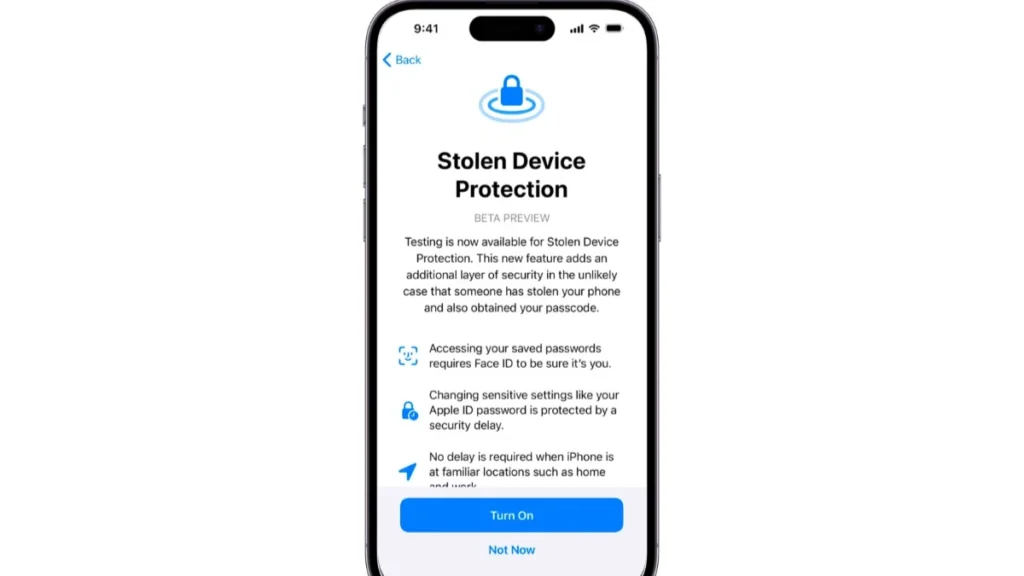Apple has launched a new security feature in its new iOS 17.3 update to protect personal data – including money apps and personal photos – if your iPhone is stolen.
Stolen Device Protection for iPhone is a notable feature of the most recent iOS 17.3 version. By protecting accounts and personal data, especially while the device is outside of its familiar surroundings such as at home or the office, this enhancement lowers the possibility of compromise in the event of theft.

Steps to enable the iPhone’s iOS 17.3 stolen device security Update
When your iPhone is updated to iOS 17.3, the security function becomes available, and it needs to be activated before the device is stolen. In addition, you need to set up or enable a device passcode, Face ID or Touch ID, Find My and Significant Locations, and use two-factor authentication for your Apple ID in order to activate the security feature.
Once prepared, follow these steps to activate protection against stolen devices:
- Navigate to Settings and select Face ID & Passcode.
- Put the passcode on your smartphone here.
- Toggle the on/off switch for Stolen Device Protection.
How Apple Stolen Device Protection works?
Apple claims that when the stolen device protection is turned on, attempting to carry out specific tasks requires extra security procedures. However, this only works when your iPhone is not in your usual surroundings, such as at home or at work.
Also Read: Microsoft Hits $3 Trillion Valuation
The security features can stop someone who has stolen your phone and knows your passcode from accessing credit cards and saved passwords, changing your account or device, or changing anything. Certain actions will need biometric authentication using Touch ID or Face ID; these operations will not require a passcode or other fallback. Other acts will require a second Touch ID or Face ID authentication one hour later. These extra steps won’t be required if your iPhone is in a familiar place.
